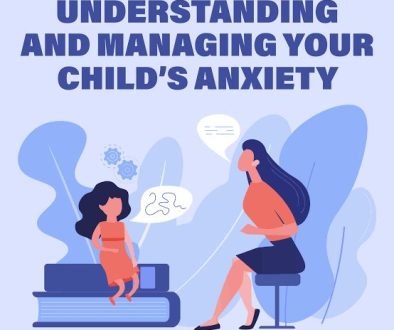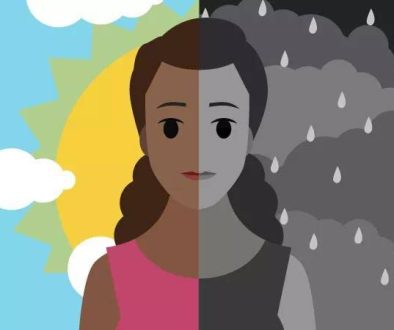Strategies for Managing Seasonal Affective Disorder (SAD
Seasonal Affective Disorder (SAD is a type of depression that occurs in relation to seasonal changes, typically emerging in the fall or winter months and lifting as spring approaches. For individuals living with SAD, the shorter days, reduced sunlight, and colder temperatures can trigger a noticeable drop in mood, energy levels, and motivation. Symptoms may include fatigue, feelings of sadness or hopelessness, difficulty concentrating, and even changes in appetite and sleep patterns. Fortunately, there are a number of strategies that can help manage SAD, providing support and relief during the winter months.
One of the most effective treatments for SAD is light therapy, which involves exposure to artificial light that mimics natural sunlight. Light therapy is generally done using a specially designed light box that emits bright, white light. Sitting near a light box for 20 to 30 minutes each morning can help regulate the body’s internal clock, boosting serotonin levels and improving mood. It’s important to consult a healthcare professional before beginning light therapy to ensure it’s suitable and used properly.
In addition to light therapy, spending time outdoors, especially during daylight hours, can also help alleviate symptoms of SAD. Even brief exposure to natural light can have a positive impact on mood and energy. Taking a walk, sitting by a sunny window, or spending time in green spaces can boost serotonin levels and help counter the effects of reduced sunlight. If possible, building in regular outdoor activities, such as a short walk during lunch breaks, can be particularly beneficial.
Exercise is another powerful tool in managing SAD. Regular physical activity has been shown to boost mood, reduce stress, and increase energy levels by releasing endorphins, which are natural mood enhancers. Aerobic exercises like jogging, swimming, or cycling are especially effective, but even moderate activities like brisk walking or yoga can help. Exercising in the morning or early afternoon is often most beneficial for individuals with SAD, as it can boost energy and mood throughout the day.
Maintaining a healthy and balanced diet is equally important in managing SAD symptoms. During the winter months, people with SAD may crave carbohydrates or sugary foods, but these can lead to energy crashes and fluctuations in mood. Instead, focusing on a diet rich in whole grains, lean proteins, fruits, and vegetables can help stabilize energy and mood. Foods high in omega-3 fatty acids, such as salmon, walnuts, and flaxseed, are also known for their mood-boosting properties and may help alleviate some symptoms of depression.
Cognitive Behavioral Therapy (CBT) has also been found effective for managing SAD. CBT is a type of talk therapy that focuses on identifying and changing negative thought patterns and behaviors. For individuals with SAD, CBT can help address and reframe negative feelings associated with winter, encouraging healthier ways to cope with the season. Studies have shown that CBT can be as effective as light therapy, and the skills learned in CBT can be useful for managing SAD over the long term. Working with a therapist to develop coping strategies can make a significant difference, especially when preparing for the start of fall or winter.
Creating a cozy and inviting indoor environment can also make a difference in reducing symptoms of SAD. Since winter often brings shorter days and more time spent indoors, making one’s home brighter and more pleasant can help combat the gloomy feeling associated with the season. Opening curtains during the day to let in natural light, using warm-colored lamps, and adding plants or bright decor can create a more uplifting atmosphere. Setting up designated spaces for relaxation, such as a reading nook with soft blankets, can also offer comfort and improve mood during the darker months.
Social support is another important factor in managing SAD. For some people, winter can bring a sense of isolation, which can worsen feelings of sadness and fatigue. Staying connected with family, friends, or support groups can provide emotional support and help maintain a sense of community. Scheduling regular social activities, whether virtual or in person, can be uplifting and prevent feelings of loneliness.
Mindfulness practices, such as meditation, deep breathing, and progressive muscle relaxation, can also help individuals with SAD manage stress and stay present. These techniques promote a sense of calm, helping individuals cope with negative emotions and reducing the mental and physical effects of stress. Practicing mindfulness on a regular basis can improve emotional resilience, allowing individuals to approach each day with greater positivity and awareness.
For those with more severe symptoms, medication may be an option. Selective serotonin reuptake inhibitors (SSRIs) are commonly prescribed for individuals with SAD, as they can help balance serotonin levels and improve mood. Consulting with a mental health professional can help determine whether medication is appropriate and guide the selection of the right treatment.
In summary, while Seasonal Affective Disorder can significantly impact quality of life during the winter months, there are numerous strategies to help manage symptoms. By using a combination of light therapy, exercise, a balanced diet, CBT, and mindfulness practices, individuals with SAD can find relief and maintain a healthier outlook throughout the season. Building a support system, staying active, and maintaining a bright indoor environment can further help individuals cope with the effects of SAD, fostering resilience and promoting mental well-being during the darker months of the year.



